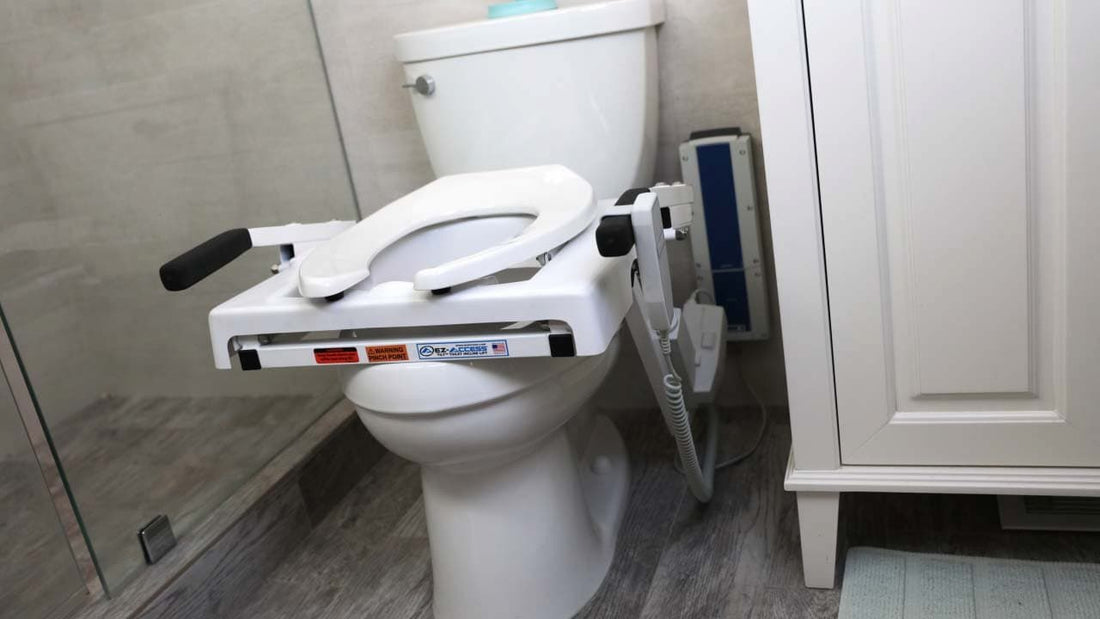Bathroom safety devices are essential for the safety of the elderly and those who are disabled.
Why? Statistics have shown that most accidents in the home are most likely to occur in the bathroom. Bathroom safety devices are made to help make everyday tasks such as toileting and showering a more independent and safer experience for those who are at a higher risk of injury. When you have the appropriate safety devices in the bathroom, it offers both user and caregiver greater peace of mind, as well as added convenience and confidence in performing the task.
What we will outline in this blog however, is the maintenance and cleaning of bathroom safety devices, as that is just as important as the devices themself. Below you will find a brief bathroom safety device maintenance guide and cleaning tips for bathroom safety devices to ensure that they are constantly ready for use whenever they are needed.
Bathroom Safety Device Maintenance Guide
One of the most important aspects of bathroom safety devices is ensuring that you have the proper equipment for the needs of the user. Bathroom safety devices must be user-friendly and do the job they are intended to do, which is making things like showering and toileting easier and safer. Installing and maintaining bathroom safety devices is essential, so here are a few maintenance tips to ensure your safety devices are well maintained:
- Before installing, always carefully read and follow the instructions provided. Properly installing bathroom safety devices will help reduce the risk of an accident, such as a bar coming loose in the shower when it’s grabbed.
- Routinely inspect all parts of the device to ensure there aren’t any loose or missing screws, all plastic parts are intact and without cracks or breaks and if the device allows for height adjustments, make sure the height has not been altered.
- Safety devices, such as toilet risers and bedside commodes should be routinely inspected to make sure seats have not broken away from the attaching equipment. Bedside commodes should be inspected to check for cracks in the bucket and that the handle is securely in place.
- Inspect shower chairs for damage, such as rust on the legs and cracks or breaks in the plastic seat.
- Replace or repair all damaged parts of equipment as soon as you become aware of it.
Cleaning Tips for Bathroom Safety Devices
Cleaning tips for bathroom safety devices are similar to the same cleaning tips you would use for standard equipment in your bathroom. It’s important to use cleaning products that are non-toxic and will not leave a residue on the safety devices. Here are a few cleaning tips for bathroom safety devices:
- Avoid using sharp tools when cleaning bathroom safety devices. If there is a stubborn stain that cannot be removed, do not use anything sharp to scrape the device; instead, take your time to gently scrub until clean or replace the part if necessary. Scraping bathroom safety device surfaces may remove some of the material that makes the equipment safe for use. For instance, scraping the raised plastic on shower chairs may cause the chair to become slick, which may lead to an accident.
- Vinegar is great for combating bacteria and it is non-toxic, so don’t be afraid to use white vinegar to clean the toilet risers, bedside commodes, shower chairs, and all parts of the shower.
- Molded bathtubs, such as walk-in tubs should be cleaned with mild soap and water or white vinegar.
- To clean mold and mildew from shower chairs, sprinkle baking soda on the surface and then pour vinegar over the baking soda. Allow the baking soda and vinegar to soak for a few minutes, and then use the showerhead to rinse the chair. Be sure to dry the chair to reduce the risk of future mildew.
- Cleaning supplies should be stored conveniently and yet out of reach of children and individuals with any mental disability. If necessary, consider a locked cabinet.
- When cleaning toilet risers use mild dish soap and warm water to clean the entire device. Raise the seat and make sure to use a soft bristle brush to scrub around the screws and other parts of the riser under the seat. Rinse well with hot water and dry thoroughly to prevent the risk of mildew and mold growth.
- Grab bars should be thoroughly cleaned daily with soap and warm water. To disinfect the bars, wipe the bar as well as the brackets with a cloth that has been soaked in white vinegar.
- After cleaning, always put cleaning supplies away and secure toxic cleaners, such as bleach in an area that can’t be accessed by children, pets, or curious elderly.
- Discard leftover cleaning solutions and always rinse and dry buckets, mops, and other cleaning tools
- Before cleaning a newly installed bathroom safety device, be sure to read the instruction manual to verify what cleaning products are safe to use for that specific device
The purpose of bathroom safety devices is to increase the comfort and safety of the elderly and disabled, but it’s also important to keep in mind that one of the most dangerous aspects of taking a shower or using the toilet is actually getting into the area. So, make sure to remove items such as bath mats to prevent tripping, ensure there isn't any standing water on the floor, and clear any and all clutter from the pathway to and from the toilet, sink, and shower that may lead to falls.
Keeping all of this in mind when looking after the care of your loved ones is vital. Their safety is top priority and we are here to help make you aware of simple, actionable steps you can take to protect them.If you have questions about this topic, feel free to give us a call!

